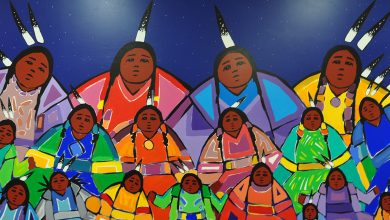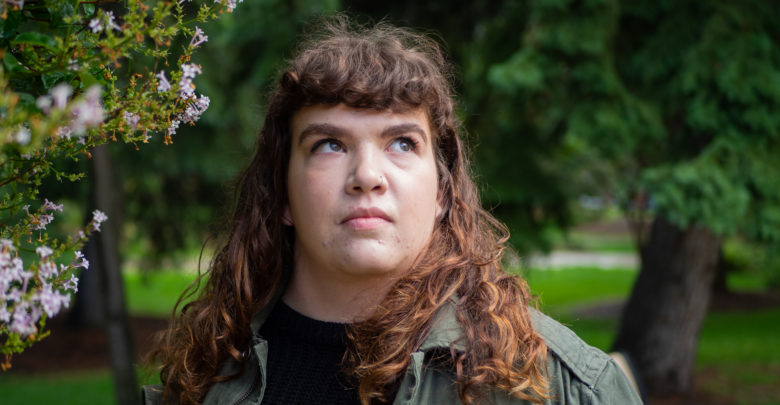 Helen Zhang
Helen Zhang I can still remember, in horrifyingly accurate detail, the first time I was fat-shamed. I was around the age of 6 and attending a friend’s birthday party. I was doing what any kid at a birthday would do: playing with friends, being obnoxious, and of course, snacking on the mountain of junk food that was the highlight of any party. As I sat with friends, my mother pulled me aside to the living room. In front of all the other parents, my mother and father told me to stop eating. My cheeks hot with embarrassment, I returned to the table and made sure to leave the bowl of chips alone for the rest of the party. It may seem like a silly memory, but it stays imprinted in my mind.
According to Ximena Ramos-Salas, director of the non-profit organization Obesity Canada at the University of Alberta, the naturalization of fatphobia starts young. In studies where three-year-olds were shown different pictures of children and asked who they would be friends with, Ramos-Salas says that bigger children were chosen last as potential friends. This may seem to support the argument that we biologically prefer skinnier bodies, but Ramos-Salas strongly disagrees.
“If you think about what three-year-olds are exposed to in terms of the cartoons they watch and the stories they read, many of them tend to portray characters with larger bodies as evil or the character people make fun of. It’s not difficult to see that the social construction and learning starts very early in childhood.”
If we think about it, every original Disney princess was skinny. The only plus-sized Disney character that immediately comes to mind is Ursula the evil sea-hag. Then there’s the trope of the fat loser in movies like Mean Girls and characters like Peter Griffin, the stupid, lazy dad. It’s not only a lack of representation that’s naturalizing fat shaming, but it’s also the fact that when we get to see fat characters, they’re portrayed in a negative light.
“The statistics show that 62 per cent of Canadians have excess weight. That’s more than half of the population that wouldn’t identify as a skinny photoshopped model or a skinny character on a TV show,” Ramos-Salas says. “None of the characters we see in the media are realistic considering our population.”
However, when I finally start to see positive representation in the media, I’m still left with a bitter taste in my mouth. Scrolling the comments on body positivity Instagram accounts, it doesn’t take long to find a comment about “glorifying obesity.” The idea that one’s weight determines their health is one of the sneakiest ways fatphobia is naturalized.
Though we cannot deny the health risks that can come with gaining weight, it’s important to remember that a weight that impairs someone’s health is different for each individual and there are also genetics and environmental factors at play. The ‘worried about your health’ dialogue is simply fat-shaming hidden under the supposed neutrality of science.
“We can’t pinpoint and say if you have x amount of fat you’re gonna develop a disease. You can be healthy at different sizes and weights,” Ramos-Salas says. “The definition of obesity is when your weight impairs your health, but it doesn’t define how much excess weight. If your weight is not affecting your health in any way, then you don’t have obesity.”
Asia Bowman, fourth-year drama student and disability advocate, had a similar experience with her body growing up. “I developed an eating disorder quite early. I remember being seven and asking my mom for weight loss pills.” However, for Bowman, her internalized fatphobia was often intertwined with the ableism of beauty standards.
“In my own experience, I’ve always felt that because of my disability, I need to make sure that every other part of my body is perfect. [I had to be] thin, active and fit- which is another hurdle when you have a disability.”
***
Bowman’s struggles with the combination of ableism and fatphobia is a reminder that there are many different ways beauty ideals can affect individuals at the intersections of their identities. Fat-shaming may be a very prevalent narrative in our society, but without taking a minute to consider how others navigate beauty ideals, it can be easy to forget how they are intrinsically intertwined with major systems of oppression, ultimately making them ableist, eurocentric, and transphobic.
“We need to think about beauty in the ways we think about any other kind of ideology… it erases its own existence. It tries to make its ideological claims seem as if they are natural,” Shama Rangwala, a Women’s and Gender Studies professor says.
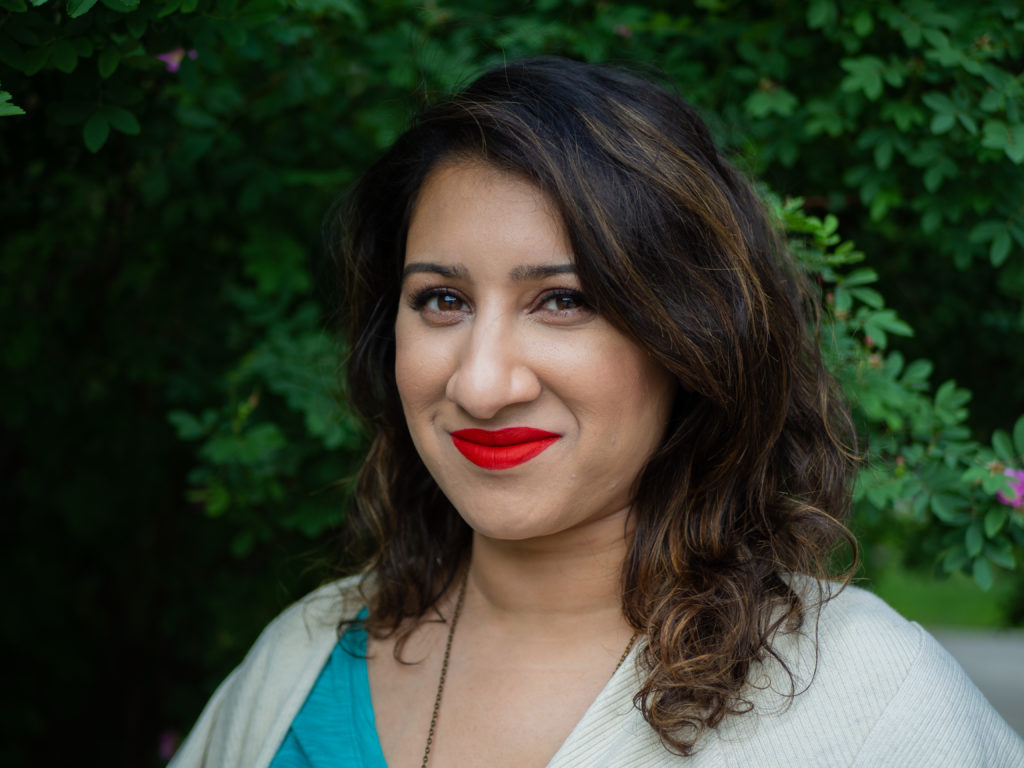
“[Naturalization] is why it’s so prevalent to say ‘I just prefer this or that.’ This is white supremacy in action — it disavows itself,” Rangwala explained. “White supremacy has always been about being supreme and beauty is a part of that. [It’s] a way to marginalize people.”
The ableism we see in beauty standards is a direct reflection of how we perceive bodies with disabilities. Individuals with disabilities are often seen as non-reproductive beings, which often means being undesirable due to an association between beauty and virility. There is also an intrinsic connection between power and beauty that creates ableist standards.
Bowman: “I’ve always felt that because of my disability, I need to make sure that every other part of my body is perfect. [I had to be] thin, attractive and fit.”
“Beauty is tied to power and value, and we live in an ableist culture where people who are able-bodied are valued more and are more powerful,” Rangwala says. “Beauty is normative, and people who deviate from norms are considered less beautiful.”
“I definitely feel pressure to conform and try to make up for my disability. I try to hide it to pass as able-bodied as I can,” Bowman says. “If I have the choice to wear shorts or pants, I’ll probably choose pants because it’s more inconspicuous. It makes my disability less noticeable which makes it easier for me to live my life at the end of the day.”
Biological determinism was used by science to justify racist and colonial policing of bodies. Using measurements of white bodies as the norm and then comparing black bodies to this standard, scientists would use the differences between measurements as a signifier for the supposed inferiority of black people. In adding significance to numbers that simply reflect genetic variance, science was used by colonists to construct race to privilege white bodies.
“The way race was created during the time of colonialism, it had to be related to some kind of biology: the Caucasoids always had a certain slope [of the forehead] and they would say it was the most beautiful one. None of these things are real,” Rangwala says. “They had to make it about appearance and naturalize it in that way because this naturalized colonialism.”
We might think the practice of using science to normalize colonist values is over, but it still reproduces itself in subtle ways. Not too long ago I watched a segment about how Kate Middleton’s nose angle makes her the most beautiful woman in the world. If you google the ‘most scientifically beautiful women,’ you’ll see a flood of white or white-passing actresses.
Kevin Mpunga, second-year nursing student and vice-president of Media Marketing for the University of Alberta Black Student Association, finds that biological determinism still dictates the body standards black males feel pressure to subscribe to.
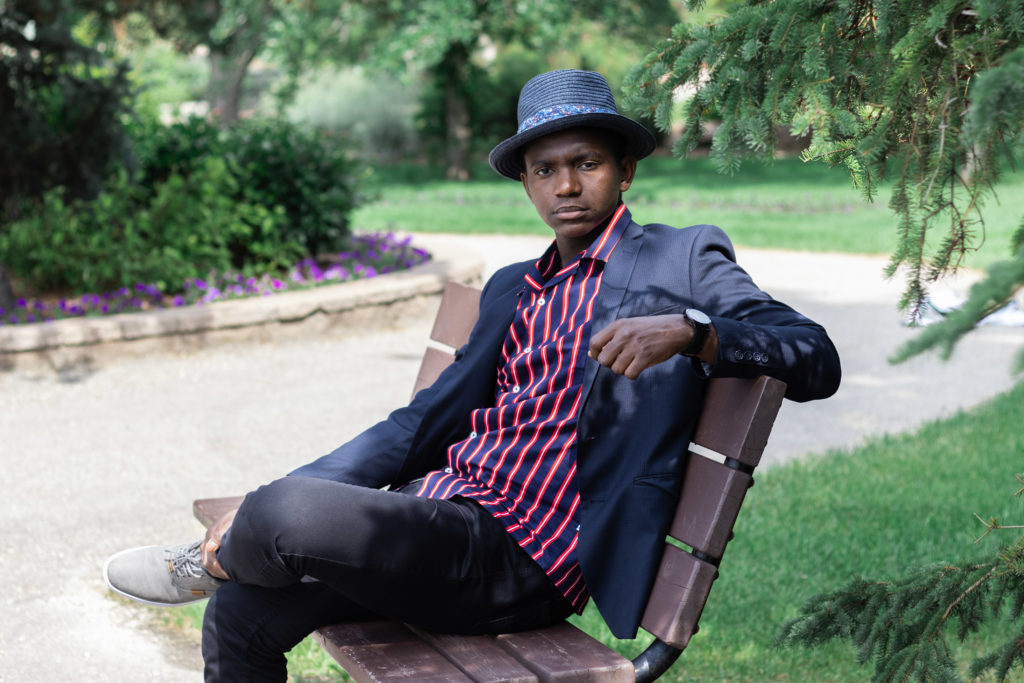
“There is the stereotype that black males are athletic, they’re fit, they’re tall. Obviously, it doesn’t apply to everyone,” Mpunga says. “It was never an issue until basketball started. I felt like I was less capable than my [black] peers and [I had] my white peers asking ‘how come you’re black and not athletic?’”
Outside of the basketball court or football stadium, he didn’t see much representation of black men growing up. Even today, it can be a struggle for him to find black models as a photographer.
“You could argue that people of colour aren’t actively trying to get into that circle, but could it also be because the people in that circle are keeping them out? People of colour are reluctant to even attempt to [model] because for so many years they have been pushed out.”
Black representation is definitely increasing in mainstream media, but it’s still often a double edged sword
as it feels like black bodies are being diluted to become more palatable.
“[Representation] is still eurocentric because you go to movies and there are black people but it’s only the light-skinned ones,” Mpunga says, “On TV shows you have a family and the mom is always the light skin one.”
Colourism is an age-old beauty standard that continues to haunt black women — the lighter the skin, the more desirable the black woman. I asked Timirio Mohamed, a third-year marketing student, about the beauty ideals she faces. Being light-skinned has become an expectation that transcends the Western world and permeates her African culture.
“Being lighter skinned and having a looser curl pattern is the big [beauty standard]. I think that it’s a universal thing because anti-blackness is universal and in turn, internalized anti-blackness is also universal,” Mohamed says. “Being Somali and growing up in my community, having lighter skin was the cultural standard of beauty that we all aspired to.”
Rangwala: “There are [few] acceptable ways to be a woman of colour in public.”
Social media has been a key tool in increasing the visibility of black bodies because it grants the black community the ability to post unabashedly. Mohamed makes sure to fill her feeds with plus size women and black femmes who more closely represent her. However, the fact that she has to make a conscious decision to do so speaks to an ever-present gap in representation.
“I spent a lot of time online and in my social media bubble intentionally, making it so I’m consuming media that is positive. We have [the singer] Lizzo who’s been killing it and we have Fenty beauty that’s making it a standard in the makeup a community for darker skin to be included,” Mohamed says. “I think there has been a lot happening that’s amazing in the space I’ve created for myself, but in general it’s not enough.”
In fact, we should be wary of the amount and kinds of black representation we see. Though they are important, there is also the danger of falling into tokenism with brands introducing one or two black and brown models to simply quench our thirst. Rangwala points out that “tokens can reinforce the overall structures of oppression,” especially if they allow brands to incorporate diversity to keep their clientele, rather than change their beliefs.
Mpunga: “People of colour are reluctant to even attempt to model because for so many years they have been pushed out.”
Beauty standards also reproduce eurocentric beauty in the fact that the black and brown women in media are often representing something greater than themselves. For women of colour, adhering to beauty standards is can be necessary to fight stigmatization.
“A lot of white feminists want to fight beauty standards and not wear makeup or shave but for brown folks, we’re representing more than ourselves as individuals. That’s where the racial aspect comes in,” Rangwala says. “If you don’t bathe, it’s not that you’re a hippy, its ‘brown folks don’t have good hygiene.’ It’s about stereotypes and thinking about how being well groomed signifies a certain kind of properness, class.”
“Because there are so few women of colour in the media, there is extra pressure to look a certain way. There are [few] acceptable ways to be a woman of colour in public.”
***
Race isn’t the only naturalized social concept to influence beauty standards. Biology and the patriarchy frequently tango under our noses to reproduce the entrenched idea that there are only two genders. This means there is only room for strictly masculine or feminine presenting individuals within beauty.
Hollis Hunter, a fifth-year Art and Design student, made it a staple throughout his childhood to cut his hair short. Even though he hadn’t come out as trans yet, he still felt an overwhelming pressure to remain within the gender binary.
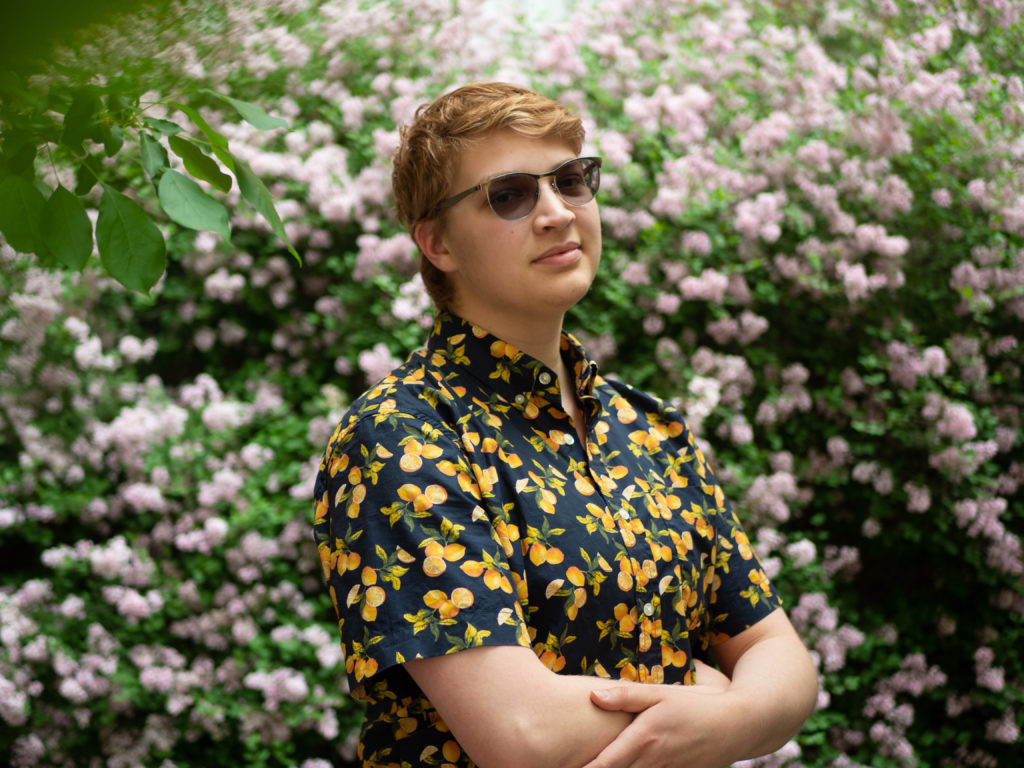
“Because I had short hair, I was bullied a lot for potentially being a lesbian. It wasn’t necessarily that I was in a same-sex relationship, but there was a lot of gender bashing happening on the basis of not performing femininity right,” Hunter said. “There was a lot of body shaming.”
For many trans individuals, navigating within beauty ideals can be a dangerous situation and your life can depend on how well you blend into the binary.
“Being cisgender is so normalized, it’s the standard you’re trying to hit in order to be neutral and safe, but at the same time trying to do that is very violent against yourself,” Hunter says. “Trying to pass or be 100 per cent cis is never going to happen because that’s just not what I am.”
At the same time, Hunter also acknowledges that race plays a large part in one’s ability to pass. Trans people of colour are frequently and disproportionately subject to violence due to an intersection of class, race and gender.
“There is no shortage in seeing other [white] trans men on TV shows or in fashion magazines,” Hunter says. “In terms of queer and trans people of colour, I find that they aren’t as frequent in mass media. They don’t get nearly the same visibility or positive representations… I think that’s a problem because there are very different cultures, expectations, and familial relationships that change the way you can present yourself and exist.”
During our interview, Rangwala introduced me to Janet Mock, a well known transgender writer who is a producer behind the show Pose. She’s black, native Hawaiian, and drop-dead gorgeous. It might seem contradictory to comment on her beauty, but she often writes on how her pretty privilege has allowed her to navigate spaces other trans individuals couldn’t.
“There is a currency in being beautiful in that people listen to you,” Rangwala says. “Other trans women of colour get murdered because of how they look — the difference is between the reception of their faces and bodies.”
“If beauty standards only exist within two genders, they pose everything in between as undesirable.”
The beauty narrative was also something Hunter had to navigate as he transitioned. He was seen as a beautiful cis woman before transitioning, and his family was worried crossing into the unknown space between genders would rob him of his beauty, and therefore his worth in society.
“Things started getting really negative when I started to come out more as trans-masculine because my parents had this idea that me being attractive or beautiful was the only thing that was valuable about me. There was a lot of [talk about] how trans people are unattractive, don’t pass, or nobody knows what they are. There was this idea that I would be ugly and that would be a bad thing.”
The patriarchal nature of our beauty standards automatically renders them as transphobic. In putting moral value only in bodies that completely morph into expected gender roles, it allows violence to police bodies onto either side of the binary. If beauty standards only exist within two genders, they pose everything in between as undesirable. Trans individuals shouldn’t feel the need to define their transition, whatever that may entail, according to our patriarchal beauty standards.
“There are really negative views on bodily modifications when they’re not enforcing the gender binary or beauty standards. People aren’t allowed to feel positive or do something with their bodies when it doesn’t fit into that,” Hunter says. “A cis woman can go get breast augmentation surgery for health or aesthetic reasons, but if a trans [woman] doesn’t want tits everyone’s [offended].”
***
If beauty is intrinsically tied to our major systems of oppression, the solution is abundantly clear.
“The solution to all of our problems is to dismantle these structures of power, but we need to live in the meantime,” Rangwala says.
Individualistic actions may not end colonialism or topple the patriarchy, but there is true value in finding the survival mechanisms that work for you. Loving our bodies can serve as an act of decolonization and a site of resistance, no matter how small.
“The beginning steps were constantly being aware and self-conscious about my self-talk, and the way I think about myself,” Mohamed says. “It’s a constant game — it’s throughout the day, it’s over the course of your life — it’s not just a state you reach at one point.”
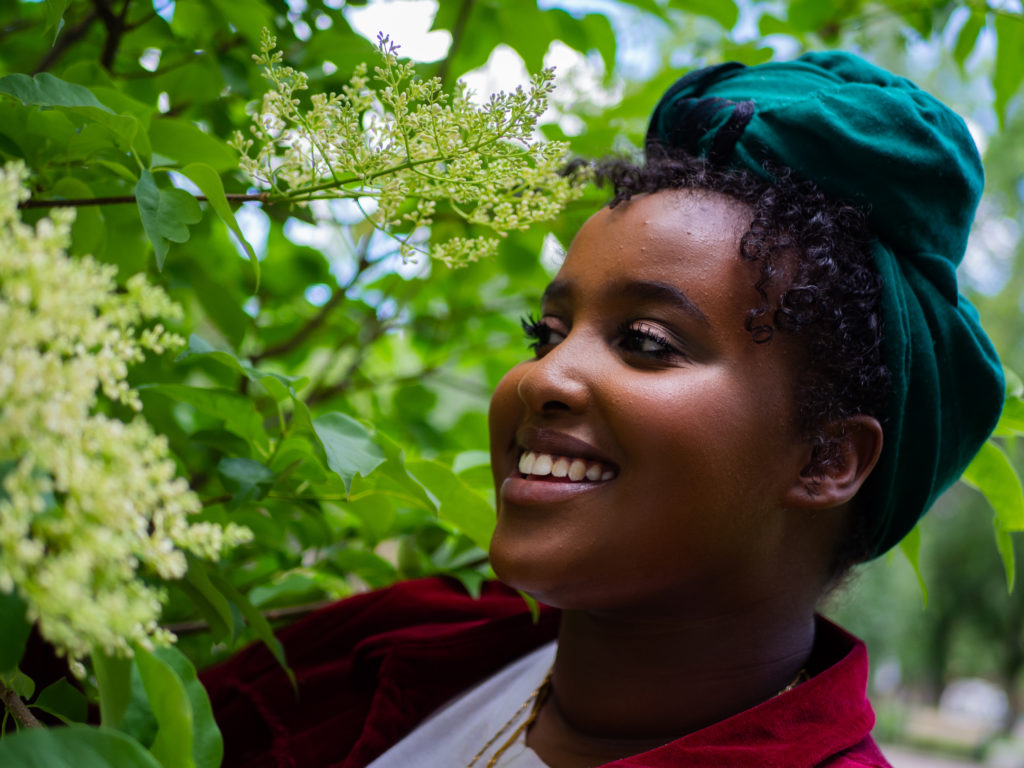
Like Mohamed, I choose to use my social media to create an inclusive body positivity feed. For me, being confident in my body, no matter how it may change, is my middle finger to the colonist standards that attempt to burden me. However, it’s important to also make sure my body positivity still allows space for others to receive the affirmation they seek.
“A lot of folks will say there are tons of cis men that have bigger chests or really curvy hips. Because I’m not a chubbier cis man… I can’t get away with those things without feeling uncomfortable or unaffirmed,” Hunter says regarding his experience with body positivity. “It’s hard finding this balance between having your very legitimate dysphoria validated and finding positivity and acceptance for yourself.”
“Loving our bodies can serve as an act of decolonization and resistance, no matter how small.”
I’m not going to lie, there are days where I put my favourite bodycon dress at the back of my closet and opt-out for a baggy shirt. There are times where I’m proud of the frizz accompanying my curly hair and low points where, as a fat black woman, I feel truly ugly. Unlearning and decolonizing a lifetime of beauty standards that present as natural as the features it tells us to hate is a radical, difficult process.
We’re up against beauty standards that have been centuries in the making. Our surroundings constantly tell us marginalized bodies are not beautiful, therefore every day there must be a conscious decision to fight against these standards. It’s tough emotional labour, but committing to celebrating marginalized bodies sends a message.
As Bowman puts it, “To take up space and not apologize for how you exist in that space is one of the most radical things you can do.”




